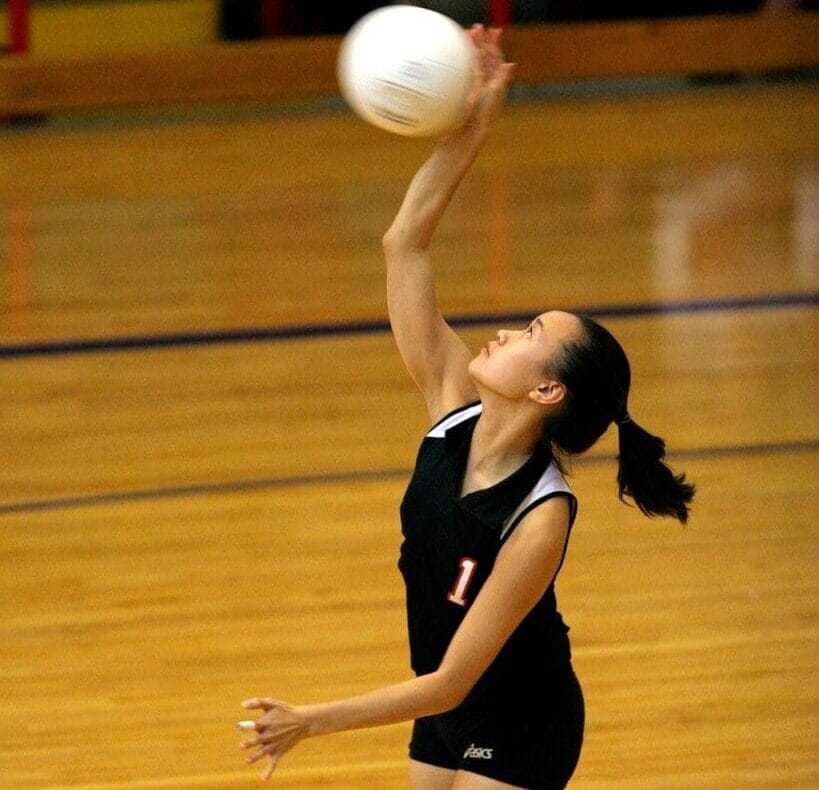Introduction
Volleyball is a dynamic sport that requires explosive movements, rapid changes in direction, and a variety of overhead actions like spiking and serving. While these motions make the game exciting, they also place a great deal of stress on the shoulders, particularly the rotator cuff muscles. As a physiotherapist working with volleyball players, understanding how rotator cuff injuries occur, how to prevent them, and how to rehabilitate them is essential to maintaining athletes’ performance and long-term health.
What is the Rotator Cuff?
The rotator cuff is a group of four muscles and their tendons
that surround the shoulder joint:
1. Supraspinatus
2. Infraspinatus
3. Teres minor
4. Subscapularis
These muscles work together to stabilize the shoulder joint,
allowing for a wide range of motion. Volleyball players rely
heavily on their rotator cuff muscles for overhead actions like
hitting, blocking, and serving.
Common Causes of Rotator Cuff Injuries in Volleyball Players
The repetitive nature of volleyball increases the likelihood of overuse injuries, especially in the shoulder.
Some of the most common causes include:
• Overuse and repetitive strain: Repeated overhead movements, such as spiking and serving, can wear
down the rotator cuff muscles over time, leading to inflammation or tears.
• Poor biomechanics: Improper form during play, including poor posture or faulty shoulder mechanics, can
place undue stress on the rotator cuff muscles.
• Muscle imbalances: Weakness in the muscles surrounding the shoulder can cause the rotator cuff to
overcompensate, increasing the risk of injury.
• Inadequate warm-up or conditioning: Without proper warm-up exercises or muscle conditioning, the
shoulder is more vulnerable to injury.
Signs and Symptoms of Rotator Cuff Injuries
Athletes with a rotator cuff injury may experience:
• Pain: A sharp or dull ache in the shoulder, particularly during overhead activities like serving or spiking.
• Weakness: A noticeable decline in strength when lifting or rotating the arm.
• Limited range of motion: Difficulty in raising the arm above the head or reaching behind the back.
• Clicking or popping sounds: Some players may experience a clicking sensation in the shoulder when
moving it.
Preventing Rotator Cuff Injuries
Prevention is key, and volleyball players can minimize their risk of rotator cuff injuries with the following
strategies:
1. Strengthening exercises: Focus on building strength in the rotator cuff muscles and surrounding
muscles, such as the deltoids and scapular stabilizers.
2. Stretching and flexibility: Tight muscles can restrict movement and lead to injury. Stretch the shoulder,
chest, and upper back regularly to maintain flexibility.
3. Proper warm-up routines: Ensure that players perform a thorough warm-up before games or training
sessions. This should include dynamic movements that gradually increase shoulder mobility and activate the
rotator cuff muscles.
4. Improve technique: Coaches and trainers should work closely with players to ensure they are using
proper biomechanics, particularly during high-stress movements like spiking or serving.
5. Rest and recovery: Overuse injuries often occur when players push through fatigue. It’s important to
incorporate rest days and adequate recovery time into training schedules to prevent wear and tear.
Rehabilitation and Treatment for Rotator Cuff Injuries
If a rotator cuff injury occurs, early intervention and appropriate treatment can significantly speed up recovery.
Here’s how rehab can help:
1. Initial Rest and Ice: In the acute phase, reducing inflammation is crucial. Applying ice and advising rest
from overhead activities can help manage pain and swelling.
2. Manual therapy and massage: Soft tissue mobilization, trigger point therapy, and myofascial release can
help to relieve tension, promote blood flow, and accelerate healing. Therapists can focus on the entire
shoulder girdle, including the rotator cuff, pectoral muscles, and upper back.
3. Strengthening and stretching exercises: Once the initial pain subsides, physiotherapists can guide
athletes through targeted exercises to restore strength and mobility. Focus should be on the rotator cuff as
well as other stabilizing muscles, such as the scapular stabilizers and core muscles.
4. Gradual return to play: It’s important to progressively reintroduce volleyball-specific activities. Players
should start with low-intensity drills, gradually increasing the intensity as strength and range of motion
improve.
5. Education and injury prevention: Teach athletes the importance of regular maintenance exercises and
techniques to prevent re-injury. Incorporating shoulder stabilization exercises into their ongoing fitness routine
can help keep the rotator cuff strong and healthy.
Conclusion
Rotator cuff injuries are a common challenge for volleyball players due to the repetitive, high-stress nature of
the sport. However, with proper strength training, attention to biomechanics, and regular preventive care,
players can minimize their risk. Book with one of our therapists today to implement an individualized
treatment program for you!
About the Author:

Brett Alexander
Registered Physiotherapist
Book with Brett at our Spadina Location!
References:
Jobanputtra, Yukti, et al. “Physiotherapy rehabilitation of rotator cuff injury.” Journal of Medical
Pharmaceutical and Allied Sciences 10.6 (2021): 4057-59.
Seminati, Elena, and Alberto Enrico Minetti. “Overuse in volleyball training/practice: A review on shoulder and
spine-related injuries.” European journal of sport science 13.6 (2013): 732-743.
Zarei, Mostafa, Saeed Eshghi, and Mahdi Hosseinzadeh. “The effect of a shoulder injury preventionprogramme on proprioception and dynamic stability of young volleyball players; a randomized controlled trial.”
BMC sports science, medicine and rehabilitation 13.1 (2021): 71.

